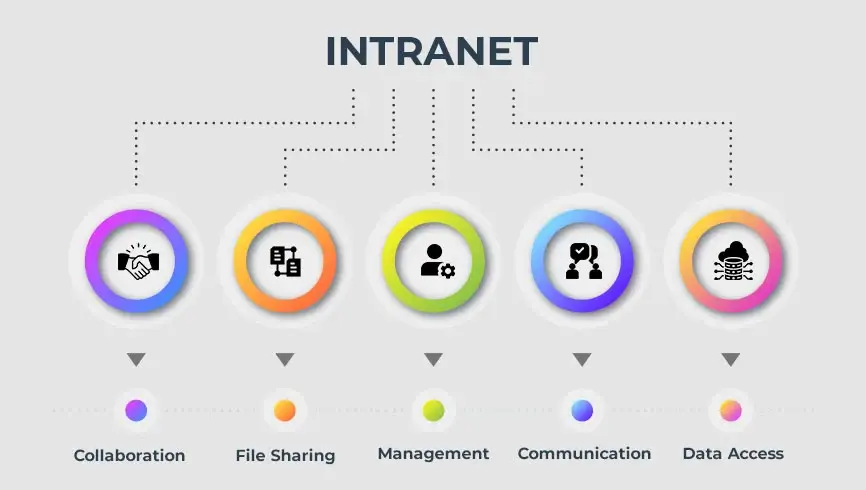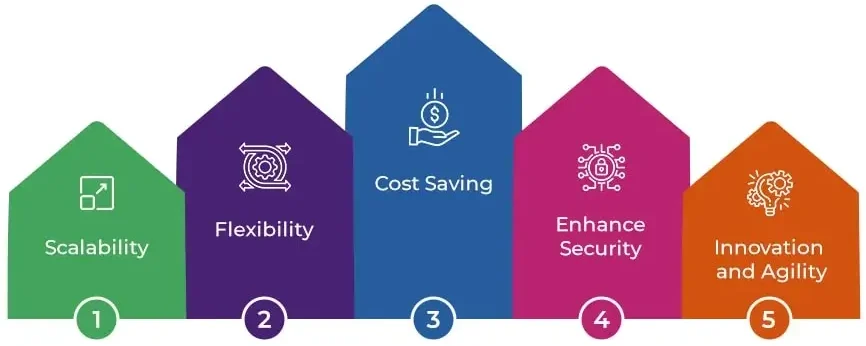How to Choose the Perfect Intranet Portal for Your Business
You can’t improve what you can’t measure. For many organizations, a modern intranet is the missing link between intention and impact. Choosing the right one is not always simple. Some are starting a new intranet project. Others need to replace their current intranet or are searching for features that make a successful intranet. Every decision starts with your business goals.
Understanding Your Business Needs
Ask yourself why your company needs an intranet. Each organization has its own reason. Some want to bring teams together. Some need a place for company news. Others want to help remote workers or need a better way to manage documents. When you know your business outcome goals, you can focus on what matters. It becomes easier to sort through company intranet software, intranet solutions, or modern intranet solutions.
Clear goals also help you measure actual business impact later. For example, some business leaders want higher employee satisfaction scores or to connect employees across locations. Others are looking to support business activities or make internal business processes easier. A well-structured intranet supports these aims and backs up long-term business success.
Defining the Purpose and Goals of the Intranet Portal

Every intranet should have a reason for existing. Maybe your company needs a place for company news and updates. Or you want a platform for content collaboration tools. Some are seeking an all-in-one intranet solution that consolidates business activities and internal communications. Others want to support instant messaging, employee directories, and news feeds.
If executive communications are important, the intranet should make it simple to share updates from the leadership team. Companies with a strong company culture often incorporate features such as company culture rewards or AI-driven, personalized content feeds to enhance employee sentiment.
Identifying Key Stakeholders and Users

Think about who will use the intranet. Involve key intranet stakeholders like HR, IT, business partners, and your leadership team. Different groups have different needs. Employees might want easy access to daily business tools and communication channels. Managers might want to see business success metrics and content interaction rates. IT teams focus on technical challenges for intranets, like cloud-hosted intranet security and avoiding compromise on intranet security.
Get input from primary users early. This helps you understand adoption rates, plan your adoption strategy, and work towards a higher average adoption rate.
Evaluating Suite, Custom, and Off-the-Shelf Solutions
Companies have many intranet software options. Some pick off-the-shelf intranet solutions. Others prefer custom-built intranets or an all-in-one intranet solution suite. A basic, box company intranet portal can help you start quickly, but may not meet your needs as you grow. Custom solution approaches give more control over corporate intranet architecture, branding elements, and branding materials.
When you review options, consider modern intranet solutions for future growth and integration. Social intranet solutions work well for organizations that want to improve employee experiences and company culture. Some platforms are built as intelligent intranets, which means they use features like AI-driven employee experience and strong content management systems. Corporate intranet solutions help you reach business objectives and support long-term business success.
Assessing Integration with Existing Processes

A well-designed intranet should work with your current business applications. Look for options that connect with your current intranet tools, content governance team, and document management systems. This helps with effective intranet adoption and keeps business processes running.
Check if the intranet connects with communication sites, document management, and instant messaging. See if it works with the business tools you already use. Good platforms make it simple to manage content repurposing, access content resources, and allow content authors to update information as needed.
Prioritizing Essential Features: Cloud, Mobile, and Customization

A modern intranet should support your digital workplace experience. Cloud hosting helps remote workers and office-based employees access the intranet securely. Mobile optimization is important too, so people can use the intranet from any device. Customization lets you use your own company intranet names, show your company culture, and adjust the intranet as your business changes.
Ensuring Ease of Use and User Experience
An intranet should be easy to use. Clear navigation, accessible content on sites, and interactive onboarding help everyone get started. Training sessions, formal training, and training video views are useful for new employees.
Think about how people will use the intranet each day. Personalized dashboards, simple menus, and real-time communication channels make it easier. Social features can help connect employees and encourage comments by employees.
Prioritizing Analytics and Content Management

Effective intranet solutions need strong analytics and content management. It’s important to track how people use the intranet, which content is most popular, and where there are gaps. Use analytics to measure content inclusion, content into departments, and user activity.
Content management features like version control, content management systems, and key content curation help keep information current. Analytics can show you which news feeds are read most, how streaming events perform, and how employee feedback is changing over time.
Considering Technical Support and Vendor Reliability
It’s helpful to choose intranet solutions providers that offer good customer service and regular updates. Look for customer support specialists, responsive feedback through surveys, and a list of features that meet your business requirements.
Aligning the Intranet Solution with Budget Constraints
Budget impacts decisions, so consider licensing, customization, branding, and support costs. Budget restraints shouldn’t force you to compromise on intranet security or important corporate intranet features. Look at the total cost of ownership and think about how the ideal solution will help your digital workplace over time.
Implementing Pilot Scenarios and Test Runs
Try the new intranet with a small group before launching for everyone. Collect feedback through surveys, run usability tests, and look at adoption rates. Test custom intranet features, document management workflows, and instant messaging. This helps ensure you get a well-structured intranet that fits your needs.
Gathering Employee Feedback and Insights
Employee experiences are important for adoption. Use surveys, focus groups, and usability tests to learn what employees think. Pay attention to their comments, see how they secure internal communications, and use their feedback to improve business processes and make content relevant.
Reviewing Existing Solution Testimonials and Case Studies
Learn from others by reading case studies and testimonials. Look at companies with similar company intranet software, business tools, and corporate intranet goals. See which intranet software options worked for them and what challenges they faced. This helps you make a better decision.
Ensuring Future Scalability and Flexibility

A successful intranet should adapt to new business scenarios and objectives as your organization changes. Choose a platform that supports new modules, evolving content, and works with future business tools. Intranet design experts can help you make sure your solution works over time, no matter how your business grows.
Frequently Asked Questions
Subtle Advice: The Role of Governance and Security
A good intranet depends on strong governance and security. Robust governance frameworks help you manage content, stay compliant, and support your business for the long term.
Why a Modern Intranet Portal Is Essential
Modern workplace trends mean companies need platforms that help remote workers, support instant messaging, and make communication easier. Modern intranet solutions with smart features, company branding, and AI-driven employee experience have become standard for business owners and employees.
Conclusion
Choosing an intranet is a big decision. Start with your business goals, focus on employee experiences, and select a platform that supports your needs now and as your business changes.






